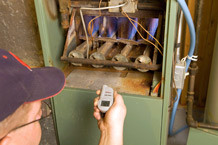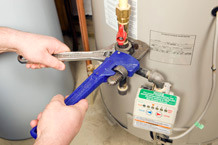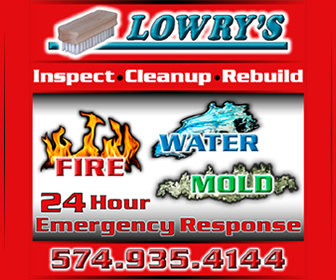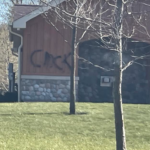 As the winter months draw near, the Indiana Department of Homeland Security is urging Hoosiers to hire trained professionals to work on their natural gas appliances. This reminder comes after the last two weeks have been especially deadly for Indiana, with four people losing their lives after trying to fix natural gas furnaces, water heaters or gas lines instead of hiring professionals.
As the winter months draw near, the Indiana Department of Homeland Security is urging Hoosiers to hire trained professionals to work on their natural gas appliances. This reminder comes after the last two weeks have been especially deadly for Indiana, with four people losing their lives after trying to fix natural gas furnaces, water heaters or gas lines instead of hiring professionals.
“We are not, by any means, picking on natural gas,” said Indiana State Fire Marshal James Greeson. “We offer the same advice regarding electricity, too. It’s important to hire people who are trained, who know what safety issues to look for and who are aware of the latest codes, standards and equipment.”
 For example, the U.S. Department of Energy reports that one in four furnaces in the United States is more than 20 years old. All furnaces, but especially older ones, require annual inspections to make sure there is no problem with the heat exchanger, which can lead to the release of deadly carbon monoxide into the home. In addition, many residential heating systems have old, uncoated brass flexible gas connectors, attaching the natural gas appliance to the natural gas supply piping. These have not been made for more than 25 years, but many are still in use. They should be replaced by newer versions made from corrugated metal tubes. Moving a gas appliance can cause these connectors to break, resulting in a gas leak, fire or explosion. A professional plumber or heating and cooling or appliance repair contractor can inspect appliances and, if necessary, safely replace the flexible gas connectors.
For example, the U.S. Department of Energy reports that one in four furnaces in the United States is more than 20 years old. All furnaces, but especially older ones, require annual inspections to make sure there is no problem with the heat exchanger, which can lead to the release of deadly carbon monoxide into the home. In addition, many residential heating systems have old, uncoated brass flexible gas connectors, attaching the natural gas appliance to the natural gas supply piping. These have not been made for more than 25 years, but many are still in use. They should be replaced by newer versions made from corrugated metal tubes. Moving a gas appliance can cause these connectors to break, resulting in a gas leak, fire or explosion. A professional plumber or heating and cooling or appliance repair contractor can inspect appliances and, if necessary, safely replace the flexible gas connectors.
Greeson offered additional safety tips for the start of this heating season. They include:
- Checking the color of the natural gas appliance’s pilot light. The flame should be blue. If it appears more orange or yellow, this is a good indicator of incomplete combustion and a sign that the appliance needs service by a professional. Natural gas fireplace logs are the exception to the blue flame rule. These products are designed to burn yellow in order to achieve a more realistic appearance to wood burning. But just like a wood-burning fireplace, it is vital the damper is open at all times during operation;
- Never using natural gas ranges or stoves for heating. This can cause a buildup of dangerous carbon monoxide levels;
- Thinking about the possibility of carbon monoxide poisoning if all members of the family appear to come down with flu-like symptoms at the same time. The symptoms of carbon monoxide poisoning are similar to those of the flu – nausea, dizziness, drowsiness, confusion and fatigue. But influenza infection patterns usually involve one family member getting sick and then three to five days later, another member of the family comes down with the flu. It’s a real red flag if everyone gets sick at the same time;
- Leaving the home immediately if the smell of natural gas is present. To be accurate, natural gas is completely odorless and colorless. Natural gas companies add mercaptan, purposely giving natural gas a rotten-egg smell so that gas leaks are detectable. People should not take the time to try to locate the leak or even use the phone from inside the home. They should leave the house immediately and then, from a safe distance, call the utility company and 9-1-1.
Greeson said newer natural gas appliances often have safety features like shut-offs to control the escape of natural gas should the pilot light go out. The older models may not.
“Natural gas is used by more than 50 percent of American households as their main heating source,” Greeson said. “It is a clean fuel, efficient and safe. But like any appliances, we urge Hoosiers to hire trained professionals to check and maintain their appliances on a yearly basis.”
For more information, visit any local utility’s website or visit GetPrepared.in.gov.














